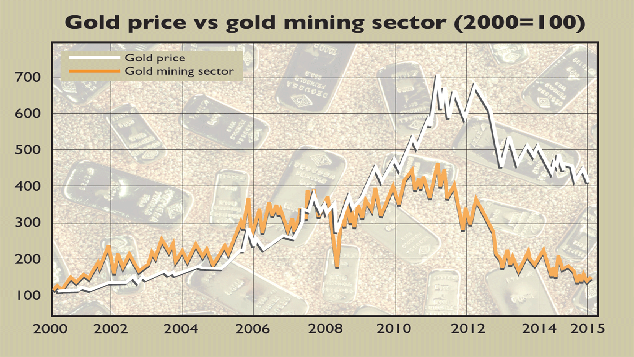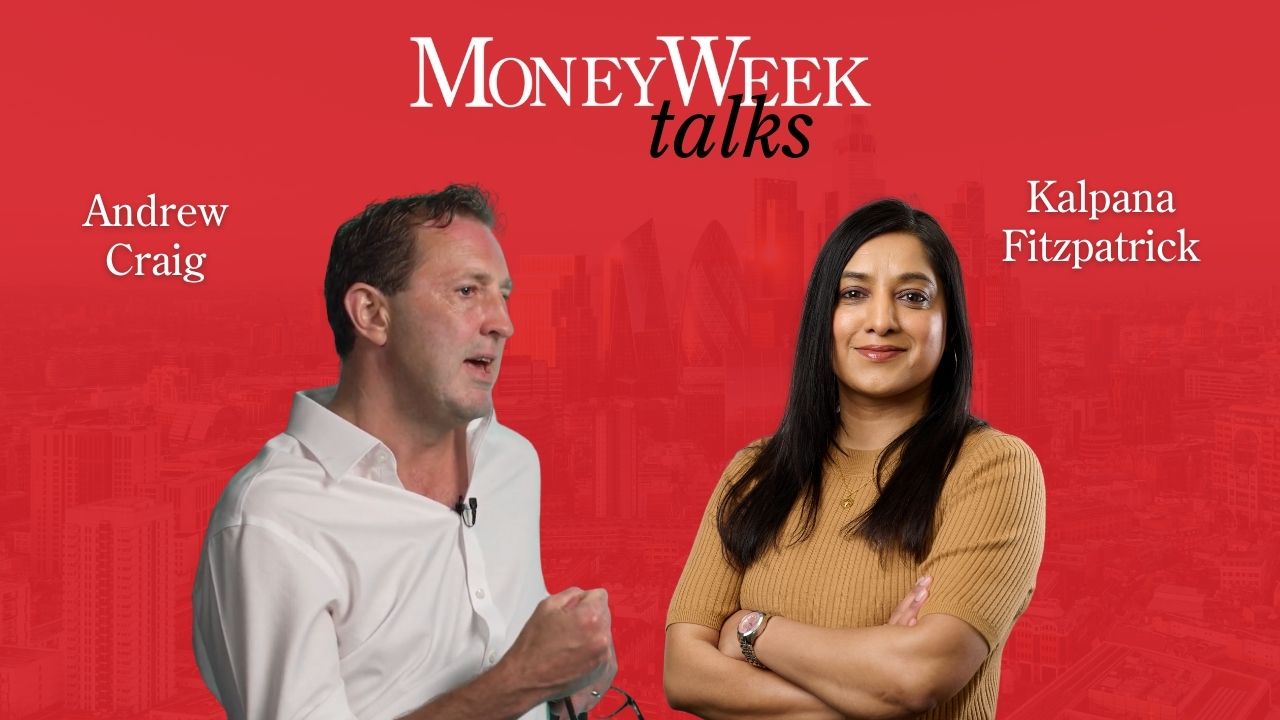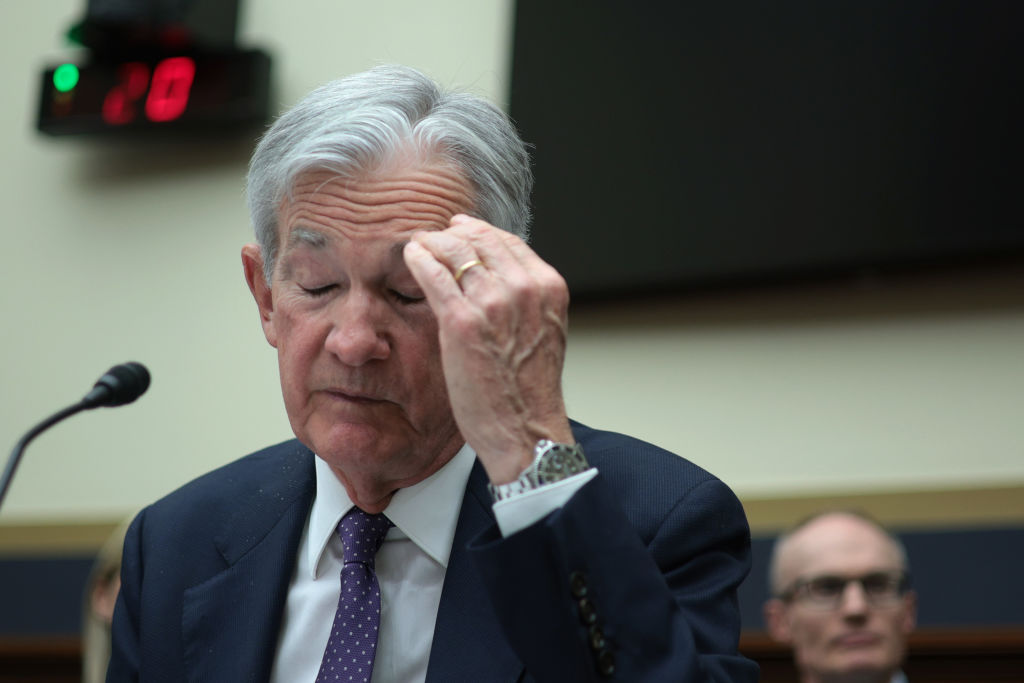Why I’m cheering gold’s fall – and how to profit from it
The gold price has fallen and miners have gone to the wall. But that spells opportunity for nimbler prospectors, says Edward Chancellor.


The gold price has fallen, and miners have gone to the wall. But that spells opportunity for nimbler prospectors, says Edward Chancellor.
Gold bugs are depressed. They may dream of hyperinflation, but inflation expectations remain quiescent, despite trillions of dollars of money-printing by global central banks. The gold price has fallen more than 40% from its peak. The prospect of the Federal Reserve raising interest rates and the strong dollar are further headwinds for owners of the barbarous relic.
Still, those who own bullion or gold exchange-traded funds (ETFs) can take comfort from one fact: shareholders in gold companies have done even worse. Since 2011, a basket of gold mining tocks has fallen by more than 70% a much steeper decline than the precious metal has experienced. With the gold price closing in on $1,000 an ounce, many mines are unprofitable, and may have to close if gold falls further. Beleaguered mining share owners might be forgiven for throwing in the towel.
MoneyWeek
Subscribe to MoneyWeek today and get your first six magazine issues absolutely FREE

Sign up to Money Morning
Don't miss the latest investment and personal finances news, market analysis, plus money-saving tips with our free twice-daily newsletter
Don't miss the latest investment and personal finances news, market analysis, plus money-saving tips with our free twice-daily newsletter
Yet something doesn't add up here. If a falling gold price is bad news for miners, then a bull market in gold should be good news for shareholders. But that hasn't been the case. While gold has lost some of its shine recently, the bullion price has more than doubled over the past decade. Yet over the same period, a basket of gold stocks (as measured by the S&P/TSX Global Gold index) has more than halved in price (see chart below). So if the bull market didn't help miners, coulda falling gold price actually benefitthem? This sounds counterintuitive.But an analysis of the "capital cycle" (which I'll explain shortly) for gold miners suggests that good times may be around the corner.

First, you have to understand what has gone wrong. Clearly, the fault doesn't lie with the gold price, which is still around four times higher than at the turn of the century, when then-Chancellor Gordon Brown, in all his wisdom, decided to off-load half of the Bank of England's holdings. Rather, the problem derives from the miners themselves. In October, John Hathaway of Tocqueville Asset Management gave a presentation at the Grant's Conference in New York, which would have depressed any attendant shareholders in gold stocks.
According to Hathaway, in the ten years to the end of 2014, the aggregate debt of the top ten gold producers climbed from $1bn to $41bn. Their number of common shares outstanding doubled. Yet the total gold production of these firms has risen by just 13% to 43 million ounces. This means that gold production on a per-share basis has declined by nearly half.It's an old saw that a mine is a hole in the ground with a liar next to it. But the recent crop of gold mine managers aren't so much liars as incompetents. They have blown billions on merger (M&A) activity.
For instance, Kinross wrote down more than 90% of the $6.1bn it paid for Red Back Mining back in August 2010. But when it comes to capital allocation among gold miners, Barrick Gold, the world's biggest producer, has to take the booby prize. Over the past three years, Barrick has announced $23bn in asset write-downs. Some comes from ill-conceived M&A, including a loss of $5bn on its 2011 takeover of Equinox Minerals.
Barrick blew a similar sum on a new development, Pascua-Lama, on the Chilean/Argentine border. This was initially conceived in 2004, with estimated build costs of $3bn. By November 2012, after many delays and unforeseen legal problems, the estimate had risen to $8.5bn. Less than a year later, Barrick suspended construction and took a multi-billion-dollar write-down without producing a single ounce of gold from the mine.
The root cause of the problem is that managements responded to the post-2000 surge in the gold price by chasing growth. Not only did they spend vast sums on M&A and opening new mines, they also drove up costs by extracting gold from poorer-quality mines what's known as "low-grading". As a result, the industry's average cash cost for extracting an ounce of gold went from around $300 in 2000 to nearly $1,200 by 2013. Long-suffering shareholders have seen little in the way of dividends, and gold miners as a whole generated negative cash flow all during one of the greatest gold bull markets ever.
Blame the capital cycle
It's tempting to see this debacle as sui generis somehow unique to precious-metals miners. But in fact, the gold miners have simply experienced a classic "capital cycle", similar to those seen in many other industries in recent years. Since 2000, we've witnessed huge over-investment in many sectors: technology and telecoms stocks during the dotcom bubble, and more recently, capital cycles in American and Irish homebuilders, shipbuilding, US shale gas, energy, basic materials, semiconductors, and so forth.
Every capital cycle is somewhat different, but they have certain features in common. During the cyclical upturn, when sales are rising and profitability elevated, investors get overexcited about future prospects. So companies invest heavily for growth. Often all of the extra cash flow generated by the boom goes on capital spending. In the global mining industry, for instance, there has been a near-perfect correlation between the rise in commodity prices and the increase in capital expenditure, which rose around fivefold between 2005 and 2015.
The capital cycle
Capital cycle analysis can be boiled down to the following key tenets:
- Capital cycle analysis can be boileddown to the following key tenets:
- Changes in supply drive industryprofitability
- Demand forecasts are more proneto error than supply forecasts
- Yet investors devote more time toconsidering demand than supply
- As a result, share prices often failto anticipate changing profitability
- The value/growth dichotomyis false: differences in firm andindustry asset growth is key
- Management's capital allocationskills are paramount
- Meetings with management oftenprovide valuable insights
- Investment bankers facilitatethe capital cycle, largely to thedetriment of investors
- Policymakers influence the capitalcycle, largely to the detriment ofinvestors
- New technologies may disruptthe normal operation of the capitalcycle
- Generalists are more able toadopt the "outside view" necessaryfor capital cycle analysis
- Long-term investors are bettersuited to applying the capitalcycle approach
Upturns in the capital cycle end, sooner or later. This nearly always takes investors by surprise. As a result, shareholders surrender much or, in the case of owners of gold miners, all of the excess returns they enjoyed during the boom. To avoid these pitfalls, Marathon Asset Management, a London-based fund manager with some $50bn of assets under management and an excellent 25-year track record, has developed what it calls the capital cycle approach to investment. I have edited a collection of Marathon's reports on the capital cycle into a book, Capital Returns.
The most important tenet of the capital cycle approach (you can read all 12 at the bottom) is that investors should spend less time trying to forecast demand. Who knows how many cars the Chinese will be driving in ten years' time? Instead, investors should focus on supply, changes in which are much easier to predict. Changes in supply and competitive conditions drive industry profitability. Yet stock prices often fail to anticipate shifts in the supply side.
Overinvestment can produce devastating losses for shareholders. Take the case of global shipping. Between 2004 and 2009, a period when shipping rates were rising, the global dry bulk fleet doubled in size. When the financial crisis hit, this new supply contributed to a 90% fall in daily rates. Due to long delivery periods, large numbers of new ships continued to be delivered for years after the collapse. Shares in dry bulk shipping companies were hammered as a result.
Capital cycle investors also tend to be suspicious of investment bankers. After all, the job of bankers is to raise capital, for which they earn handsome fees. They don't care about the long-term outcome for shareholders. A dangerous phase in an industry's capital cycle is generally marked by high levels of M&A and public listings (IPOs).
Brokers, too, act as cheerleaders during the capital-raising frenzy. Their industry analysts are often too close to management in the companies they cover and they get swept up in the excitement of the boom, taking what behavioural psychologist and Nobel laureate Daniel Kahneman calls the "inside view". Investment cycles take a long time to play out. Any analyst who calls a top too early is likely to be shown the door. This means the capital cycle approach can only be applied successfully by investors with long time horizons.
Besides short-termism, there are a number of other behavioural explanations as to why the capital cycle is overlooked. Most investors and corporate executives are infatuated with growth. Yet recent academic research suggests that the poor returns of growth stocks (ie, firms with high valuations) and the excess returns of value stocks (ie, companies with low valuations) can largely be explained by differences in capital spending and asset growth.
Andrew Lapthorne, Societe Generale's quantitative strategist, has run the numbers. Lapthorne finds that over the course of this century the stocks with the lowest asset growth (those in the bottom decile) have delivered nearly twice the average annual return of those with the highest asset growth (those in the top decile). The problem is that investors love growth, because they extrapolate present conditions into the future they think linearly. Yet we live in a cyclical world, where mean-reversion the tendency for valuations to return to a long-run average is driven by capital spending, and excess returns in most industries are competed away.
It's time to buy the miners
The capital cycle investment approach is inherently contrarian. It not only provides a framework for avoiding investments in sectors that have been on spending binges, but also points to bargains in distressed industries. With this in mind, it's worth taking another look at the gold miners. It's true that their recent history of capital allocation has been dreadful. But things have started to change for the better.
New management teams have replaced the accident-prone incumbents at several of the leading firms, including Newmont, Barrick Gold and Newcrest Mining. Growth is out of fashion. Instead, management at firms such as Newcrest, whose new CEO doesn't even come from the mining industry, are focusing on cash generation. Executive compensation for gold miners is increasingly linked to shareholder value and returns on capital.
Overinvestment generally takes place when firms trade at a premium to replacement cost. After all, if holes in the ground cost $10 to dig but are valued in the market at $20, there's a strong incentive to dig more of them. But when those holes are only valued at $5, then the digging usually stops. Gold mining firms have reached this point. Their shares are generally valued at below tangible book value. As Tocqueville's Hathaway observes, it's now cheaper to increase gold production by acquiring another miner than by opening a new mine.
Capital spending is being cut across the board. The weak gold price works to the advantage of low-cost producers, such as Goldcorp and Newcrest, since unprofitable mining firms are being forced to shut down. It has also reduced the supply of scrap coming onto the gold market. Meanwhile, the strong dollar is bringing down mining costs in foreign countries. Mining equipment costs are falling. These factors have enabled the more efficient producers to drive down the average cash cost of extracting an ounce of gold.
No one can tell what the demand for gold will be in years to come. Investors may be looking for a hedge as inflation returns, or not. Chinese gold consumption may soar, or not. But what's clear is that gold supply is set to shrink for the foreseeable future. And from a capital cycle perspective, the prospects for mining companies are looking brighter than for many years. Their investors should be cheering rather than cursing the weak gold price. Long may it continue falling!
Edward Chancellor is a financial historian, journalist and investment strategist. Capital Returns: Investing Through the Capital Cycle A Money Manager's Reports 2002-15 (Palgrave Macmillan) is out now, priced £24.99.
The best stocks and funds to buy now
If you're looking to invest in gold miners, consider these options, writes Alex Williams. Agnico Eagle Mines (Toronto: AEM), which operates in Canada, Finland and Mexico, brought five new mines into production between 2008 and 2010 and has been one of the best-performing gold stocks this year, up 20%.After some teething problems at its new mines (including a fire caused by a wolverine at its Meadowbank mine), the company is now over the worst of its capital spending commitments.
Production has nearly doubled in the last five years to1.8 million ounces, in turn helping to lower costs, which were $759 per ounce last quarter, down from $990 a year ago. Agnico one of the largest holdings in the Tocqueville Gold Fund, see below has maintained spending on exploration, leading to a major new discovery at Meadowbank. It has also capitalised on the falling gold price by buying 50% of the Malartic mine in northern Quebec, currently Canada's largest gold mine.
Randgold Resources (LSE: RRS) is another staple holding in the Tocqueville Gold Fund. The company builds and operateshigh-grade gold mines across west Africa. CEO Mark Bristow has doggedly stuck to his principle that "grade is king". As a result, he avoided chasing the marginal ounces that the rest of the industry raced after when gold prices were rising. Randgold now boasts some of the lowest operating costs in the industry, at below $700 per ounce. It also landed a highly accretive deal in September. AngloGold, which has been grappling with its $2.3bn debt load, has offered Randgold 50% of its Obuasi gold mine in Ghana in exchange for splitting the funding. "Gold is so cheap, it's being given away," says The Wall Street Journal.
Alternatively, gold funds offer much broader exposure togold miners, allowing investors to ride the long-term cycle, without fretting over "black swan" events specific to anyone mine. BlackRock Gold & General and the TocquevilleGold Fund are two of the biggest names in the sector. Both are down heavily since 2011, but if the gold mining industry is entering a capital spending sweet spot, the downtrend may have run its course.
How Dominic Frisby's October gold tips fared
Since my MoneyWeek piece on gold miners in early October, both gold and gold stocks saw a fast move up and even faster move down, writes Dominic Frisby. Gold has now hit my target of $1,050 an ounce. I'm not sure $1,000 will hold, but I'm expecting a rally in the short term. I'm encouraged by the miners. Despite gold's sell-off, most have held above their summer lows. Randgold (LSE: RRS) which my colleague Alex has also tipped (see above) remains my favourite "senior" producer. It's now at 4,070p. I have 5,000p as a target. Pan African Resources (Aim: PAF) has held above its summer lows. Producing 200,000 ounces of gold a year, and some platinum, and paying a 7% yield, the risk-reward trade-off is compelling.
As for the Canadian mid-caps, B2Gold (Toronto: BTO) I like below $1.50. But Lake Shore (Toronto: LSG) concerns me. It has slipped below its summer lows at $1, after announcing a fund-raising to explore a discovery it's made. A normal market would get excited about a discovery. Not this one. So there's a worrying downtrend at present. But I still think Goldcorp willbuy it. I mentioned a fondness for Aureus (Aim: AUE), which is trying to build a mine in Liberia. That fondness has gone.
I spoke to CEO David Reading in early October. We will be in commercial production "by 1 December at the latest", he told me. The day before 1 December there is no commercial production. Aureus announces a fund-raising. The stock is trading at 13p, the raise is at 5p. The stock halves. Another name on the already disgracefully long list of gold-miningCEOs who have said one thing and done something else.
First Mining Finance (Toronto: FF), on the other hand, is going great guns. The takeover of two firms, adding over six million ounces to the inventory, is done. Another takeover (of a cash shell trading at 60% of its cash value) has been announced. I predict this will be a billion-dollar firm, albeit the share count will probably double to get there. Finally, my lottery tickets tiny explorers and ideal take-out candidates. They're still there and still lottery tickets: Maritime (Toronto: MAE), Moneta Porcupine (Toronto: ME) and Gowest (Toronto: GWA).
Get the latest financial news, insights and expert analysis from our award-winning MoneyWeek team, to help you understand what really matters when it comes to your finances.
Edward specialises in business and finance and he regularly contributes to the MoneyWeek regarding the global economy during the pre, during and post-pandemic, plus he reports on the global stock market on occasion.
Edward has written for many reputable publications such as The New York Times, Financial Times, The Wall Street Journal, Yahoo, The Spectator and he is currently a columnist for Reuters Breakingviews. He is also a financial historian and investment strategist with a first-class honours degree from Trinity College, Cambridge.
Edward received a George Polk Award in 2008 for financial reporting for his article “Ponzi Nation” in Institutional Investor magazine. He is also a book writer, his latest book being The Price of Time, which was longlisted for the FT 2022 Business Book of the Year.
-
 The investing mistakes not to make: MoneyWeek Talks
The investing mistakes not to make: MoneyWeek TalksPodcast MoneyWeek's digital editor speaks to Andrew Craig, founder of Plain English Finance, about why passive investing isn't always the only option for good investors
-
 Household savings ratio drops – are you setting enough aside for 2026?
Household savings ratio drops – are you setting enough aside for 2026?High inflation has pushed the savings ratio down again and the figure could dip further next year
-
 The challenge with currency hedging
The challenge with currency hedgingA weaker dollar will make currency hedges more appealing, but volatile rates may complicate the results
-
 Can Donald Trump fire Jay Powell – and what do his threats mean for investors?
Can Donald Trump fire Jay Powell – and what do his threats mean for investors?Donald Trump has been vocal in his criticism of Jerome "Jay" Powell, chairman of the Federal Reserve. What do his threats to fire him mean for markets and investors?
-
 Freetrade’s new easy-access funds aim to beat top savings rates
Freetrade’s new easy-access funds aim to beat top savings ratesFreetrade has launched an easy-access exchange traded fund (ETF) range - here’s how the ETFs work and how they compare to the savings market
-
 Go for value stocks to insure your portfolio against shocks, says James Montier
Go for value stocks to insure your portfolio against shocks, says James MontierInterview James Montier, at investment management group GMO, discusses value stocks and slow-burn Minsky moments with MoneyWeek.
-
 Where do we go from here?
Where do we go from here?Features A new series of interviews from MoneyWeek
-
 As China reopens, why pick an income strategy?
As China reopens, why pick an income strategy?Advertisement Feature Yoojeong Oh, Investment Manager, abrdn Asian Income Fund Limited
-
 Income in the USA
Income in the USAAdvertisement Feature Fran Radano, manager on The North American Income Trust
-
 The challenge of turbulent markets
The challenge of turbulent marketsAdvertisement Feature Today, ISA investors face one of the most challenging economic environments seen in recent years. However, good companies can still thrive, even in the toughest economic conditions. That’s why BlackRock’s fund managers focus on these businesses when they’re looking for investment opportunities.
